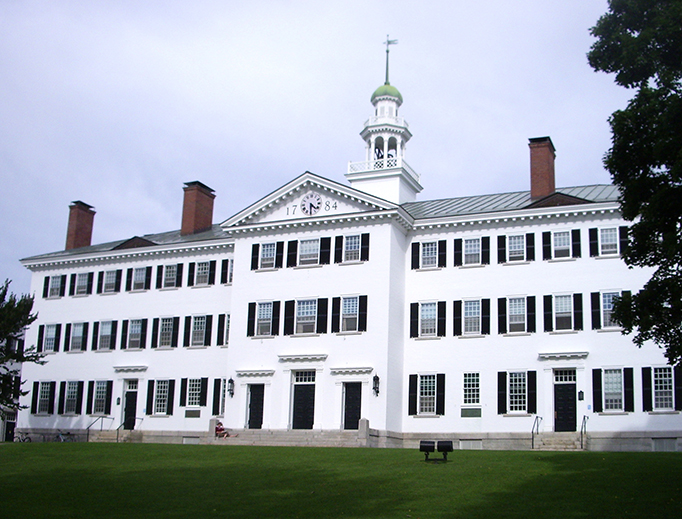The First Woman to Earn a Doctorate in Computer Science Was a Nun
In 1965, Sr. Mary Kenneth Keller, BVM, became the first American woman to earn a doctorate in Computer Science.

Stories like this warm the faithful cockles of my Catholic heart.
However, I can imagine it must burn the collective britches of fundamentalist atheists everywhere.
And I can smell the smoke already.
First, Bl. Raymond Llull created the world's first analog computer in the 14th century.
Next, in 1675, Gottfried Wilhelm Leibniz invented both differential and integral calculus without which computers wouldn’t function. He might not have been Catholic but he was very pro-Catholic. In addition, the Lutherans and Calvinists didn't think much of him so I'm happy to welcome him with a warm ecumenical embrace.
Then, in 1950, Jesuit Fr. Robert Busa helped create hypertext, thus allowing computers to use and understand alphabet for the first time.
And, on June 7, 1965, Sr. Mary Kenneth Keller, BVM, became the first American woman to earn a doctorate in Computer Science. She and her fellow Washington University student, Irving Tang, became the two first people in the United States to earn doctorates in the field.
By the way, she also helped create BASIC (Beginner's All-purpose Symbolic Instruction Code)―a general-purpose, high-level programming language whose design emphasized ease of use thus allowing students in fields other than science and mathematics to use computers. Until this time, nearly all use of computers required writing custom software―something only scientists and mathematicians could do.
BASIC became widespread on microcomputers in the mid-1970s and 1980s. in fact, PCs were bundled with BASIC. This allowed professionals, business owners, hobbyists and consultants to develop custom software on computers at an affordable price.
Even now, BASIC remains essential for other computer languages including Microsoft's Visual Basic.
Sr. Mary Kenneth Keller was born in Ohio in 1913, though no one is sure of the specific date. In 1932, she entered the Sisters of Charity of the Blessed Virgin Mary and professed vows in 1940. She went on to study at DePaul University, where she earned a BS in Mathematics (1943) and an MS in Mathematics and Physics (1953). Her thesis topic was entitled "Inductive Inference on Computer Generated Patterns."
She was one smart Catholic cookie.
In the 1960s, Sr. Mary Kenneth studied at the University of Wisconsin and later at Purdue, the University of Michigan, and Dartmouth College.
In what can only be called a spectacularly delicious irony, Dartmouth (a secular school) had, until meeting Sr. Mary Kenneth, barred women from studying in its computer department.
In 1958, she began working at the National Science Foundation workshop at Dartmouth College. And, because they gave this very clever nun a chance, she helped develop the computer language BASIC.
Her dissertation, written in CDC FORTRAN 63, was titled "Inductive Inference on Computer Generated Patterns."
In 1965, she became the first American woman to earn a doctorate in Computer Science.
And that's when she rolled up her habit's sleeves and really went to work.
Sr. Mary Kenneth founded the Computer Science Department at Clarke College in Iowa. She remained its director for 20 years. She dedicated herself to making sure computers were available to everyone and not merely scientists, engineers and technicians. She hoped to make computers into teaching tools and not merely computing tools. In addition, she envisioned and anticipated the Artificial Intelligence revolution helping computers to think on their own. Had Sr. Mary Kenneth seen The Terminator movies, she might have been given pause, but that's neither here nor there. The point is that Sr. Mary Kenneth was a scientific genius, a visionary and a woman of incredible faith.
And as all Catholic kids know, at the core of every nun, is the heart of a teacher which beats fiercely in the hope that her students finally get it.
Sr. Mary Kenneth wrote, "For the first time, we can now mechanically simulate the cognitive process. We can make studies in artificial intelligence. Beyond that, this mechanism [the computer] can be used to assist humans in learning. As we are going to have more mature students in greater numbers as time goes on, this type of teaching will probably be increasingly important."
Sr. Mary Kenneth believed computers could offer access to information and promote education―in this regard, she anticipated the Internet and breakthroughs in educational software.
Now, the Computer Science Department at Clarke College is known as the Keller Computer Center and Information Services. And, true to the visionary's plan, the Center provides computing and telecommunication support to Clarke College students, faculty members and staff.
Clarke College has also established the Mary Kenneth Keller Computer Science Scholarship in her honor.
Sr. Mary Kenneth, ever an advocate for promoting women in computing, engineering and science in general, established the Association of Small Computer Users in Education (ASCUE). In addition, this tough no-nonsense nun with a heart-of-gold wrote four books about computing in addition to a huge number of articles in the field.
On January 10, 1985, at the age of 71, Sr. Mary Kenneth was called to the Great Computer Center in the Sky where she probably spends her time troubleshooting and addressing the fervent prayers of people who've lost important files on their computers down here on Earth.
So, next time you want to curse out your computer for refusing to do exactly what you want it to do, remember, we have a friend who stands at the ready to help us. There were very few problems that flustered Sr. Mary Kenneth while she walked among us computer-phobes, and I suspect that computers everywhere now bend to her will.













